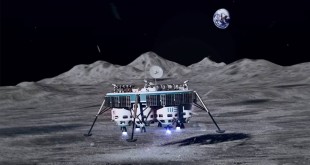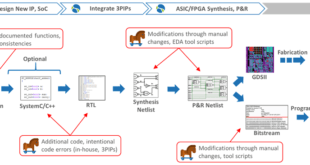The modern battlefield is undergoing a radical transformation as nations invest heavily in autonomous combat systems. The United States, China, and Russia are leading this technological arms race, each developing unmanned ground vehicles (UGVs), AI-powered drones, and robotic platforms designed to dominate future conflicts. Recent engagements in Ukraine and Syria have demonstrated the growing role of autonomous systems in reconnaissance, logistics, and direct combat operations.
As we progress deeper into the 21st century, one of the most profound shifts in military strategy and battlefield dynamics is the emergence of Unmanned Ground Vehicles (UGVs) and autonomous combat robots. Once the stuff of science fiction, these robotic platforms are now becoming integral assets for armed forces around the world. From mine clearance to reconnaissance and direct combat support, UGVs are reshaping how militaries engage in warfare, reducing human risk while enhancing tactical flexibility.
In this article, we explore the deployment and impact of UGVs in the evolving theater of war. We will delve into the capabilities, applications, and the future trajectory of UGVs.
UGVs on the Frontline: Capabilities, Roles, and the Global Race for Ground Combat Robotics
Unmanned Ground Vehicles (UGVs) are redefining the future of warfare, security, and industrial operations. Unlike their aerial counterparts, UGVs operate directly on land, offering unique advantages in mobility, endurance, and payload capacity. While Unmanned Aerial Vehicles (UAVs) dominate the skies with speed and wide coverage, UGVs offer ground-level persistence, enabling operations in harsh, cluttered, and constrained environments.
These robotic platforms can carry heavy payloads, maneuver under tree canopies, inspect buildings from within, and function continuously across multiple terrains and weather conditions. Unmanned Ground Vehicles (UGVs) are robotic platforms engineered to perform critical tasks in environments too dangerous, inaccessible, or logistically challenging for humans. Unlike aerial drones (UAVs), UGVs excel in ground-based operations, leveraging their ability to carry heavy payloads (up to 1,500+ lbs), navigate complex terrain, and persist for extended durations in all weather conditions.
Why UGVs Matter
Primarily designed to replace or assist humans in hazardous tasks, UGVs are widely used in military operations such as explosive ordnance disposal (EOD), surveillance, and reconnaissance. Their applications extend beyond defense into agriculture, mining, and construction.
UGVs offer several advantages that make them indispensable on the modern battlefield. They reduce exposure to life-threatening environments, enhance precision in targeting and surveillance, and maintain operational readiness around the clock. Unlike humans, they don’t need sleep, food, or rest, making them ideal for prolonged missions. Their ability to adapt to varying payloads and mission requirements also makes them versatile tools in asymmetric warfare.
Modern UGVs are engineered with a combination of platforms, AI-driven sensors, control systems, communication links, and guidance interfaces. As battlefield risks evolve, UGVs are increasingly equipped with lethal weaponry, contributing to both offensive and defensive military strategies with minimal risk to human lives.
Their unique capacity to operate under tree canopies, enter buildings, and maintain a physical presence makes them indispensable for military reconnaissance, explosive ordnance disposal (EOD), and urban warfare. Beyond defense, UGVs are revolutionizing industries like mining, agriculture, and disaster response—deploying in scenarios such as collapsed structures, radioactive zones, or minefields. Equipped with advanced sensors (LiDAR, thermal imaging) and AI-driven autonomy, UGVs can map environments, detect threats, and execute precision tasks like disabling bombs or delivering supplies without risking human lives.
The rise of urban warfare, increased threats from IEDs, and the need for persistent surveillance are major catalysts driving UGV adoption. Technological breakthroughs in artificial intelligence, edge computing, machine learning, and navigation systems are enabling UGVs to perform with increasing autonomy and decision-making capabilities.
Moreover, the shift toward manned-unmanned teaming (MUM-T) is gaining traction. For instance, the U.S. Army’s Optionally Manned Fighting Vehicle (OMFV) program aims to pair crewed vehicles with UGVs to carry out reconnaissance, breaching, and support missions. Similarly, Russia has integrated UGVs like Uran-9 and Marker drones into military operations, while China’s Pathbreaker UGV shows promise in convoy and perimeter defense tasks.
Expanded Roles and Battlefield Applications
The inclusion of semi-autonomous and autonomous UGVs in modern militaries has led to a fundamental shift in how ground operations are conducted. These vehicles are built to operate under extreme conditions—rugged terrain, urban warfare zones, or contaminated areas—and can function independently for extended periods. UGVs play an increasingly critical role in the following missions:
Countries across the world are racing to develop cutting-edge UGVs, with significant strides made in the U.S., Russia, China, and Europe. The United States, China, and Russia are leading this technological arms race, each developing unmanned ground vehicles (UGVs), AI-powered drones, and robotic platforms designed to dominate future conflicts. Recent engagements in Ukraine and Syria have demonstrated the growing role of autonomous systems in reconnaissance, logistics, and direct combat operations. Each nation is tailoring its ground robotics strategy to its military doctrines, technological capabilities, and geopolitical objectives.
China’s Push for AI-Enabled Combat Systems
China has rapidly advanced its military robotics program, focusing on unmanned systems that integrate artificial intelligence for swarming, targeting, and decision-making. The People’s Liberation Army (PLA) views intelligentized warfare as a critical component of its strategy to counter U.S. military superiority.
Key Developments in Chinese Military Robotics
The Sharp Claw series of UGVs has evolved into modular platforms capable of carrying machine guns, anti-tank missiles, and advanced reconnaissance equipment. Recent iterations demonstrate improved autonomous navigation, allowing these robots to traverse complex terrain with minimal human input. The VT4 is a modular heavy UGV capable of carrying advanced weapons, while the lightweight Camel Spider robot is optimized for urban combat and room clearing tasks.
China has also made strides in drone technology, with systems like the Blowfish A2 helicopter drone, designed for urban combat. This armed UAV features a 20-kilometer operational range and can carry a 30-pound payload, making it a versatile tool for both surveillance and strike missions.
Perhaps most concerning to Western analysts is China’s development of AI-powered decision systems. Neural networks now process battlefield data in real time, suggesting tactical responses faster than human operators can react. These systems are being tested in simulated environments, with plans for eventual field deployment.
Russia’s Combat Robotics: From Syria to Ukraine
Russia’s military robotics program has seen both successes and setbacks. Russia has invested in a wide array of UGVs like the heavily armed Uran-9, equipped with anti-tank missiles and a 30mm cannon. The modular Marker UGV demonstrates voice-controlled AI capabilities and supports reconnaissance and mine clearance. The smaller Rynok robot specializes in chemical detection and electronic warfare support.
While early systems like the Uran-9 UGV performed poorly in Syria, recent innovations—including low-cost kamikaze robots built from hoverboard parts—show a shift toward cost-effective, expendable autonomous weapons.
Recent Russian Robotic Systems
The Marker UGV, tested in 2023, represents a significant upgrade over previous models. Designed for reconnaissance and combat support, it incorporates AI for target recognition and can operate in coordination with drone swarms.
Russia has also deployed Lancet loitering munitions extensively in Ukraine. These drones exhibit increasing autonomy, capable of identifying and engaging targets with minimal human oversight. Their success has prompted further investment in similar systems.
One of Russia’s most unconventional projects involves repurposing consumer hoverboards into ground-based kamikaze robots. These low-cost devices are fitted with explosives and guided toward enemy positions using simple navigation systems. While crude, they highlight Russia’s focus on affordable, mass-producible robotic weapons.
U.S. Military Robotics: Balancing Autonomy and Control
The Pentagon has responded to foreign advancements with several high-profile initiatives, emphasizing human-machine teaming while maintaining strict oversight over lethal decision-making.
American companies such as QinetiQ and Pratt Miller have introduced the Robotic Combat Vehicle-Light (RCV-L), a hybrid electric platform fitted with grenade launchers and machine guns. The Multi-purpose Logistics and Equipment Transport (MULE) robot supports battlefield resupply and casualty evacuation, while systems like the XQ-85 Valkyrie drone bring air-ground interoperability to the fold.
Major U.S. Robotics Programs
The Robotic Combat Vehicle (RCV) Program is testing light, medium, and heavy UGVs designed to operate alongside manned units. Recent exercises demonstrated how robotic vehicles can provide reconnaissance, fire support, and logistics in contested environments.
In 2023, the U.S. announced the Replicator Initiative, an ambitious plan to field thousands of autonomous drones and UGVs within two years. This effort aims to counter China’s numerical advantage by leveraging mass-produced, attritable systems.
The Air Force’s Golden Horde program explores swarming munitions with collaborative targeting capabilities. While still requiring human authorization for strikes, these drones demonstrate increasing autonomy in navigation and threat assessment.
Europe:
Estonia-based Milrem Robotics has emerged as a leader with its THeMIS platform. In collaboration with Italy’s Leonardo, Milrem has armed THeMIS with the HITROLE Light Remote Weapon Station, enabling it to deliver direct fire support using AI-enabled targeting. Deployed in over 16 countries including Spain and Thailand, the THeMIS system underscores Europe’s ambition to lead in combat automation.
Future Trends and Technological Horizons
Looking ahead, UGVs are expected to incorporate advanced autonomous navigation, AI-driven threat detection, and swarming capabilities. Swarm technology—already in development in Russia, the U.S., and China—envisions multiple UGVs acting as a single coordinated unit, overwhelming enemy defenses through distributed intelligence.
The U.S. Army’s Mad Scientist Initiative outlines key areas of focus: improved terrain mobility, resilient communications in contested environments, and seamless human-machine collaboration. Additionally, hybrid-electric drivetrains, modular payloads, and ruggedized AI systems will likely become standard in next-generation UGVs.
Looking ahead, UGV development will focus on improved mobility, tactical behavior modeling, system health maintenance, and learning/adaptive AI capabilities. The U.S. Army’s Mad Scientist Initiative emphasizes these features as essential for future integrated military operations. Swarm coordination, edge computing, and real-time autonomous decision-making will be game changers.
Recent advancements include the U.S. Army’s Autonomous Platform Demonstrator (APD), designed for hybrid-electric propulsion and high-speed maneuverability. China’s Pathbreaker and Russia’s Marker are testaments to increasing reliance on AI for battlefield advantage. AI integration is rapidly transitioning UGVs from manually operated machines to semi-independent warfighters.
Ethical Dilemmas and Security Risks
Despite their advantages, UGVs present significant ethical and strategic challenges. Lethal autonomy, such as Russia’s kamikaze-capable Nerekhta UGV, raises concerns about accountability and compliance with international law.
The line between human-controlled and fully autonomous systems will continue to blur as militaries grant AI increasing authority over lethal decisions. While most nations currently maintain human oversight requirements, the speed of future conflicts may pressure militaries to delegate more autonomy to machines. This raises the specter of weapons that can select and engage targets without explicit human approval—a threshold many experts argue should never be crossed.
Proponents of military robotics argue that autonomous systems could reduce collateral damage by making more precise targeting decisions than stressed human soldiers. They point to AI’s potential to minimize civilian casualties through advanced sensor processing and strict adherence to programmed rules of engagement. However, critics counter that no algorithm can replicate human contextual understanding or moral reasoning. They warn of a future where life-and-death decisions are delegated to machines, creating what some have termed “war without conscience.
Cybersecurity is another vulnerability, as demonstrated by the 2023 breach of a Ukrainian drone network. The interconnected nature of modern UGVs makes them susceptible to hacking, jamming, and data manipulation.
Electronic and cyber warfare will evolve to specifically target robotic networks. Future battles may involve hacking autonomous systems, spoofing their sensors, or deploying electromagnetic pulses to disable them. These tactics could render entire robotic battalions useless, creating new vulnerabilities even as nations race to field more autonomous platforms.
The absence of international regulations has also fueled an unchecked arms race in military robotics. Nations are rushing to develop autonomous weapons not because they necessarily want to use them, but because they fear falling behind adversaries. This dynamic mirrors the Cold War’s nuclear proliferation, except with far less established deterrence frameworks. Without multilateral agreements to limit certain types of autonomous weapons, the world risks entering an era where algorithms, rather than human judgment, dictate the thresholds for lethal force.
Public perception and legal frameworks lag behind technological development. As UGVs begin making decisions in high-stakes environments, policymakers must establish clear lines of responsibility, acceptable use, and transparency in operations.
Conclusion
The battlefield of tomorrow will not just be filled with soldiers, but also with intelligent machines—UGVs that scout, shoot, and supply with precision and persistence. Unmanned Ground Vehicles are no longer experimental novelties—they are front-line enablers of modern warfare. As technologies advance and military doctrines adapt, UGVs will play an even greater role in shaping future conflicts. With careful regulation and ethical oversight, these machines can provide unmatched support on the battlefield, minimizing human casualties and amplifying force capabilities. The age of autonomous ground warfare has arrived, and the race to master it is well underway.
As countries race to develop these systems, the line between man and machine in warfare continues to blur. The rise of UGVs offers a transformative shift in military operations, but also demands new doctrines, international laws, and ethical standards to ensure their use remains responsible and controlled.
In the end, the question is no longer if autonomous ground combat robots will shape warfare—but how we choose to use them.
References and Resources also include:
 International Defense Security & Technology Your trusted Source for News, Research and Analysis
International Defense Security & Technology Your trusted Source for News, Research and Analysis


